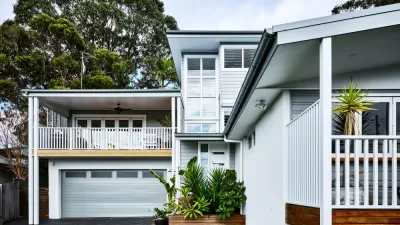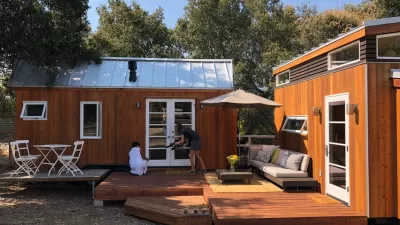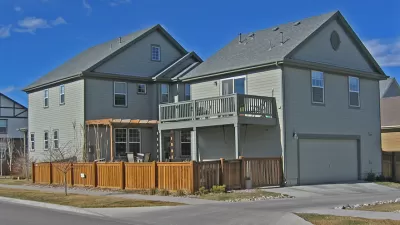Granny flats, mother-in-law units, accessory dwelling units (ADUs), or secondary units—whatever you call them, more and more cities, regions, and states are making it easier to deliver subtle density in the backyard.
Billy Ulmer writes of the broadening appeal of accessory dwelling units (ADUs):
Long seen as a novelty in real estate development, ADUs are experiencing a new wave of interest from organizations as diverse as Smart Growth America, Sightline Institute, and AARP.
Major cities like Austin, San Francisco, Seattle, Los Angeles, Nashville, San Diego and Minneapolis have made recent legislative changes to make ADUs easier to build. The state of California followed suit with a new law that took effect in January of 2017.
After explaining this mother-in-law friendly form of infill housing, Ulmer goes into more detail about how and where ADUs are catching on as one potential solution to skyrocketing housing prices. There are also forthcoming events focusing on ADUs and their various forms. The "Reinventing the Home" event will be held on October 23, 2017 in Washington, D.C., and the "Build Small Live Large Summit" will take place in Portland, Oregon on November 3-5.
FULL STORY: Why small will soon be large

Maui's Vacation Rental Debate Turns Ugly
Verbal attacks, misinformation campaigns and fistfights plague a high-stakes debate to convert thousands of vacation rentals into long-term housing.

Planetizen Federal Action Tracker
A weekly monitor of how Trump’s orders and actions are impacting planners and planning in America.

San Francisco Suspends Traffic Calming Amidst Record Deaths
Citing “a challenging fiscal landscape,” the city will cease the program on the heels of 42 traffic deaths, including 24 pedestrians.

Defunct Pittsburgh Power Plant to Become Residential Tower
A decommissioned steam heat plant will be redeveloped into almost 100 affordable housing units.

Trump Prompts Restructuring of Transportation Research Board in “Unprecedented Overreach”
The TRB has eliminated more than half of its committees including those focused on climate, equity, and cities.

Amtrak Rolls Out New Orleans to Alabama “Mardi Gras” Train
The new service will operate morning and evening departures between Mobile and New Orleans.
Urban Design for Planners 1: Software Tools
This six-course series explores essential urban design concepts using open source software and equips planners with the tools they need to participate fully in the urban design process.
Planning for Universal Design
Learn the tools for implementing Universal Design in planning regulations.
Heyer Gruel & Associates PA
JM Goldson LLC
Custer County Colorado
City of Camden Redevelopment Agency
City of Astoria
Transportation Research & Education Center (TREC) at Portland State University
Jefferson Parish Government
Camden Redevelopment Agency
City of Claremont





























